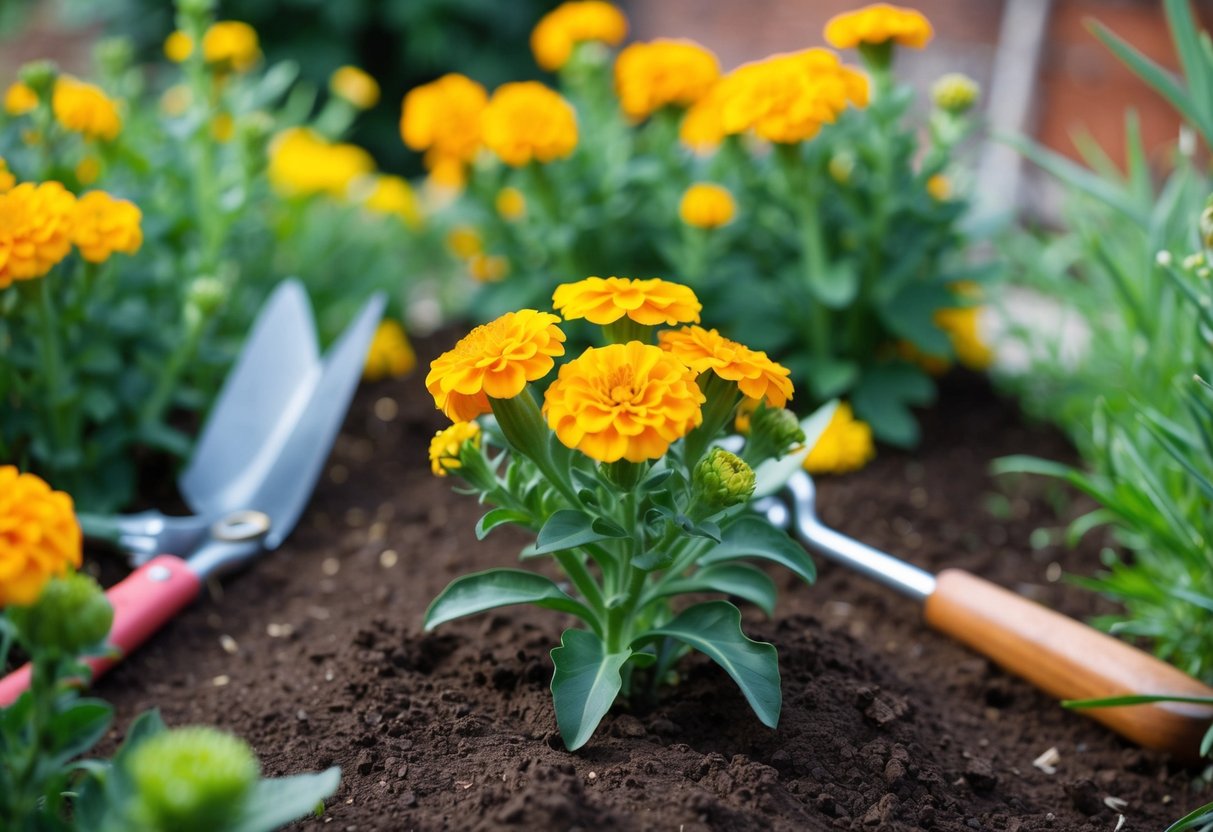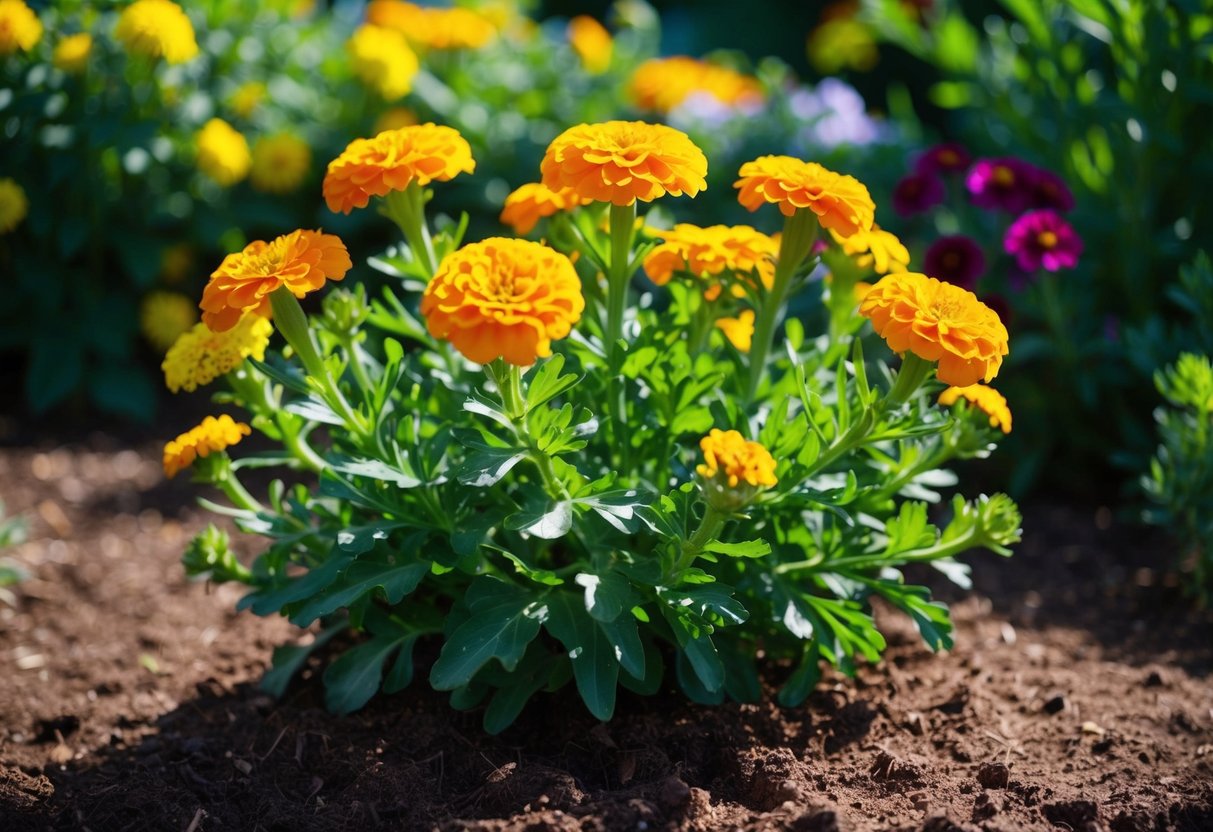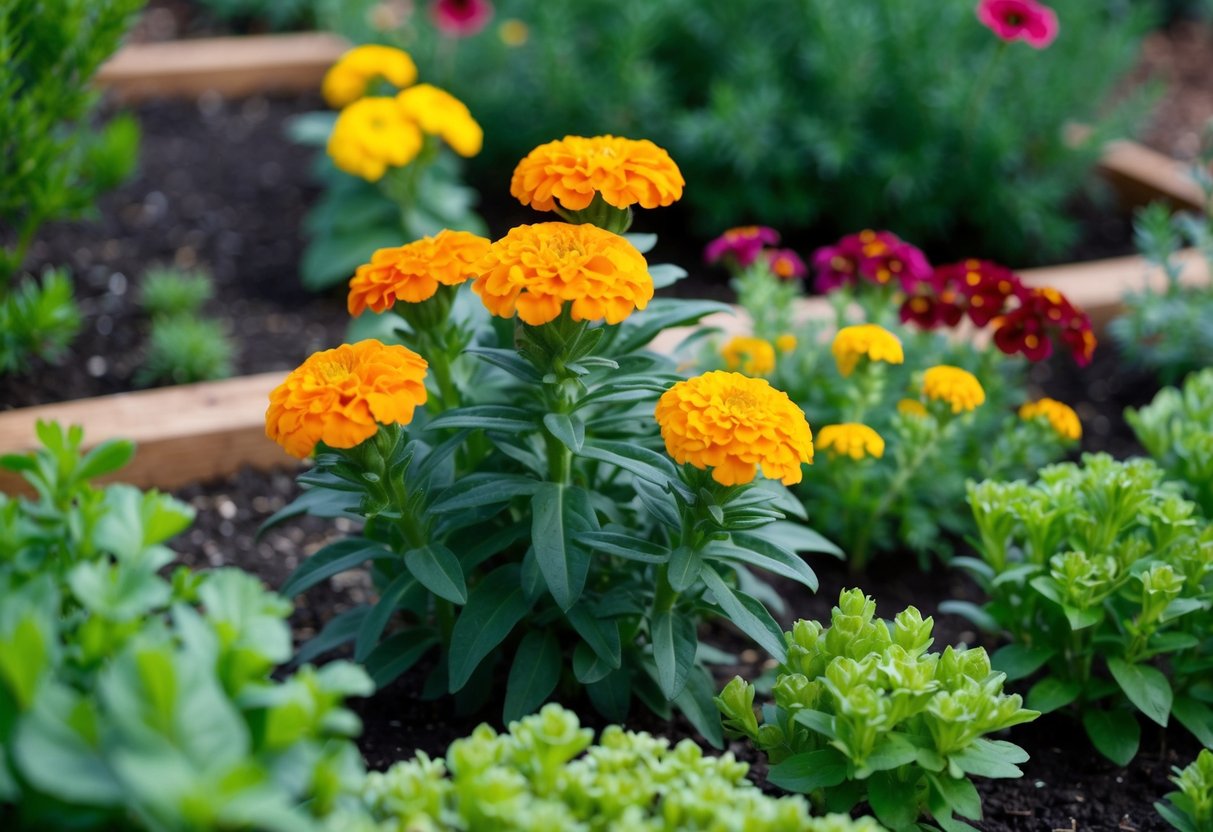How Long Do Marigold Plants Last? A Guide to Their Blooming Season
When you plant marigolds in your garden, you might wonder how long these bright flowers will last. Marigold plants typically bloom from early summer until the first frost. This means you can enjoy their vibrant colors for several months. By providing proper care, you can extend their blooming season.

You don’t need much to keep marigolds happy. They thrive in sunlight, so ensure they get at least 6 to 8 hours of it daily. Planting marigolds in well-draining soil is also important for their success. While marigolds are low-maintenance, occasional watering during dry spells will keep them looking their best.
Whether you are an experienced gardener or just starting, marigolds are an excellent choice for adding a splash of color to your garden. Their ease of care and long blooming season make them a favorite among flower enthusiasts. Explore a variety of marigold types to find the ones that best fit your garden style.
Understanding Marigold Varieties

Marigolds come in various species, each with unique features. In gardening, selecting the right type of marigold can make a big difference in a garden’s appearance and health.
Characteristics of Different Marigold Species
There are several types of marigolds, and each has its own distinct traits. Tagetes is a common genus, with popular varieties such as African, French, and signet marigolds.
African marigolds are known for their large, vibrant blooms and tall growth. They can reach up to three feet tall. These marigolds thrive in sunny locations and can add height to gardens.
French marigolds are smaller, growing around 6 to 12 inches. They produce dense, bushy plants with rich orange and yellow flowers. They are good for edging or filling in gaps between other plants.
Signet marigolds offer a different look with their fine, lacy foliage and smaller, dainty flowers. They have a citrus-like scent and are often used in culinary dishes due to their edible petals. Signet marigolds also handle rocky or poor soils well.
Choosing the Right Marigold for Your Garden
Picking the right marigold depends on your garden’s conditions and your aesthetic preferences. If you want tall, standout blooms, then African marigolds might be your choice.
For those who prefer shorter, dense flowers, French marigolds could be ideal. Their compact size makes them perfect for garden edges or containers.
If you want a unique variety, consider signet marigolds. These are great for adding delicate texture and can even enhance the flavor in salads with their edible petals.
Start with good-quality marigold seeds for better growth. You can find seeds in stores or order them online. Always check their growth requirements and ensure your garden provides the right conditions.
Cultivation and Planting

Growing marigolds starts with choosing the right soil and learning how to properly plant and care for them. From germination to transplanting, paying attention to the needs of your marigolds ensures they thrive in their environment.
Best Practices for Germination
To start marigold seeds, wait until the danger of frost has passed. Choose a sunny spot where your marigolds can get plenty of light. Sunlight is essential for the best growth, as marigolds need 6-8 hours of full sun during the day.
Sow the seeds about an inch apart and cover them lightly with soil. Keeping the soil moist, but not waterlogged, helps in germination. The soil should not be too rich in organic matter, as marigolds tend to do better in leaner conditions. Use soil with a neutral pH of 6.0 to 7.0, which creates an optimal environment.
Transplanting and Soil Requirements
Once your seedlings are ready for transplanting, it’s important to choose the right spot and soil. Use well-draining, loamy soil to prevent waterlogging. Plant your marigolds in a location with full sun exposure.
Spacing is key to healthy growth. For smaller varieties like French or signet marigolds, space them 8 to 10 inches apart. Larger African marigolds can go 10 to 12 inches apart. Make sure to handle the seedlings gently during transplanting, watering them thoroughly to help them settle in their new location.
If using containers, select a good soil-based potting mix. Keep an eye on soil conditions and ensure the pH remains neutral for vigorous plant health.
Marigold Growth and Maintenance

Marigolds thrive with just a little care and attention. Key aspects include ensuring they receive enough sunlight, water, and nutrients and protecting them from pests and diseases.
Sunlight, Watering, and Fertilization
Marigolds are sun-loving plants that do well in full sun. Make sure they get at least 6 hours of sunlight each day. This helps prevent disease and promotes healthy growth. When it comes to watering, allow the soil to dry out between sessions. Overwatering can lead to root rot.
A balanced fertilizer with equal parts nitrogen, phosphorus, and potassium can be used occasionally, especially in lean soils. Simply sprinkle it around the base of the plant once a month during the growing season. Avoid over-fertilizing, as this can lead to lush foliage but fewer blooms.
Seasonal Care and Dealing with Pests
Marigolds are annuals that often bloom throughout the growing season. Deadheading, or removing spent blooms, encourages new flowers to grow. Keep an eye out for common pests like aphids and nematodes. Regular checks can help catch infestations early.
If you notice sticky residue on leaves or distorted growth, it might be aphids. Spray them off with water or use insecticidal soap. Powdery mildew can also appear, especially in humid conditions. Ensure good air circulation by spacing plants properly, and remove affected leaves to prevent the disease from spreading.
Companion Planting with Marigolds

Marigolds are great for gardens because they help keep pests away and attract beneficial insects. They can grow well alongside many types of plants in both vegetable gardens and outdoor containers.
Benefits in Vegetable Gardens and Beyond
Marigolds can be a wonderful addition to your vegetable garden. They are known for repelling certain pests due to their strong scent. This makes them an excellent option for keeping unwanted insects away from your vegetables. For example, they can help deter carrot rust flies and other harmful bugs from your garden. Marigolds also attract beneficial insects that can keep pest populations down and pollinate your plants.
Beyond pest control, marigolds improve the health of some plants by increasing nutrient uptake. For instance, they are believed to enhance the sweetness of carrots by boosting carotenoid content. Moreover, marigolds are an easy choice for various gardens because they are hardy, drought-tolerant, and adaptable to different growing conditions. They thrive in garden beds or container plants, making them versatile companions in many settings.
Selecting Companion Plants
When choosing companion plants for marigolds, consider both garden plants and vegetables that will benefit from their presence. Tomatoes, for example, can benefit significantly from being near marigolds. This pair can help keep each other pest-free, improving the health and yield of your tomato plants. Be sure to leave enough space between marigolds and tomatoes to let both plants thrive.
Marigolds pair well with herbs such as basil, which can further keep your garden pest-free. Leafy greens like lettuce and cabbage also do well when planted near marigolds, as they gain protection from pests. By carefully selecting the right companions, you can enjoy a more vibrant and productive garden.
Lifecycle: From Seed to Bloom

Marigolds are popular for their vibrant blooms and relatively simple care requirements. They’re known for adding a splash of color to gardens through summer into fall. Understanding their lifecycle, from planting marigolds as seeds to watching them bloom, helps you enjoy these flowers longer and ensure they thrive.
Annual Vs. Perennial Marigolds
Marigolds are typically annual flowers, which means they complete their life cycle in one growing season. In some regions, especially in warmer hardiness zones, they may act as tender perennials, surviving mild winters.
Annual marigolds need to be replanted each year. Once they die off in winter, you can plant new seeds or use self-seed methods to continue enjoying them. Harvesting marigold seeds at the end of the season is key for planting next year. If you prefer not to do this, buying new seeds or plants may be your best option.
Gardeners appreciate annual marigolds for their rapid growth. They’re great for adding instant color to gardens. Although they’re not true perennials, their ability to bloom in a single season makes them a garden favorite.
Understanding the Marigold Bloom Time
Marigold bloom time ranges from late spring to the first frost. During this period, marigolds show off their brilliant flowers. Their blooming is influenced by factors like daylight hours and temperature, making these flowers suitable for most climates.
Marigolds usually take about eight weeks to bloom after planting seeds. Providing adequate sunlight and using slow-release fertilizers can promote their growth. In moderate climates, planting marigolds ensures a vibrant garden display for many months.
Whether in containers or directly in the ground, ensure the soil is moist but not waterlogged. With proper care, marigolds are a joy for any garden, offering rich textures and colors that can brighten your space throughout the growing season.







